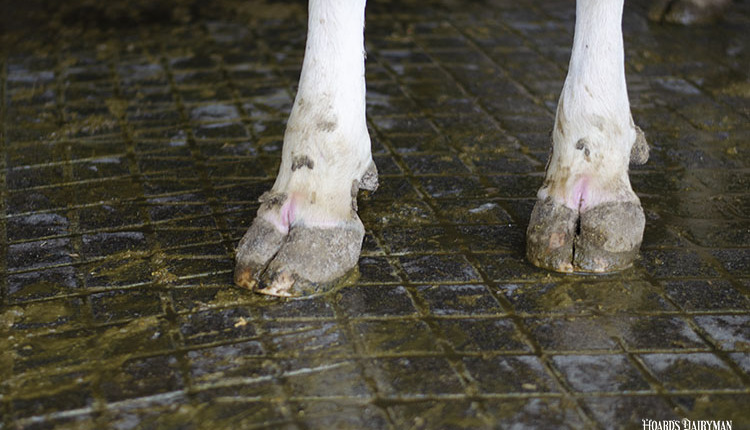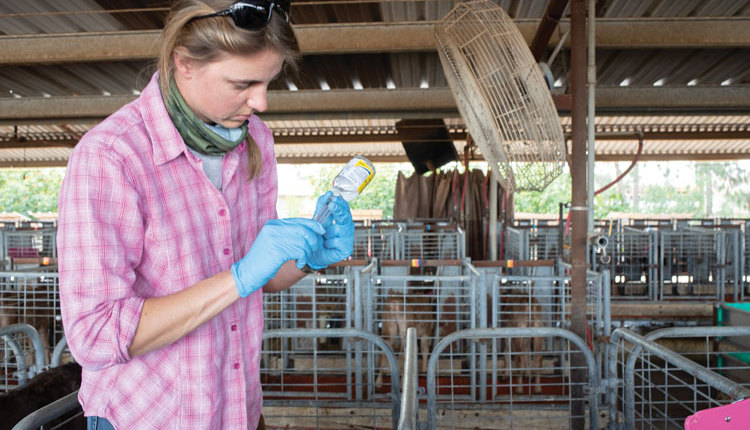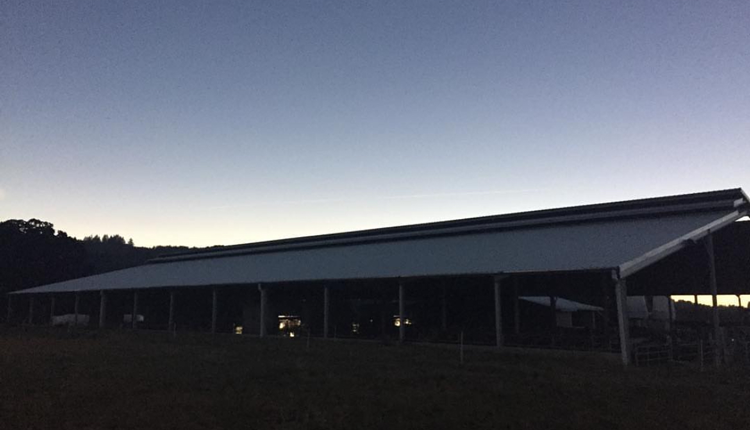by Amanda Smith, Hoard's Dairyman Associate Editor
Throughout the Dairy Cattle Welfare Symposium held in Guelph, Ontario, Canada, there was an overarching theme that wrapped through the majority of presentations. Animal welfare is a multidimensional concept combining biology, affective states and natural living. A combination of the three visions lead to better research and standards for our industry.
Jeffery Rushen, Agriculture and Agri-Food Canada, in a presentation assessing Canada's guidelines in its Code of Practice, noted that when deciding which animal welfare concerns need to be addressed, Europe has already done most of the grunt work. In all systems, both tie stalls and free stalls, a consortium of European scientists identified the largest hazards to dairy cattle welfare based on available data. Rushen shared the top six hazards:
1. Genetic selection for production while ignoring health traits.
2. Withholding veterinary care.
3. Poor stall design and inadequate bedding.
4. Inadequate ration composition or transition feeding programs.
5. Poor air quality.
6. Zero grazing.
Specifically in free stall facilities, overcrowding – in regards to stalls per cow and insufficient feedbunk space – and inadequate floor surfaces for the cow to walk on were identified as top concerns to address in the future. Tie stalls also contained a hazard. The system's most serious offense was that cows are tied with limited ability to exercise.
Rushen also touched upon how well different sets of standards address a range of issues. The U.S. FARM program tends to be more sensitive to welfare issues impacting production. Fewer of the U.S. standards address the concepts of pain and natural behavior. The Global Animal guidelines, which are often used by organizations such as Whole Foods, tend to place the most emphasis on consumer concerns related to livestock production. The program is more balanced to reflect concerns related to stress and natural behaviors. In contrast to this, the Canadian Code of Practice takes a more balanced approach tackling production related stressors and consumer concerns.
Within the code, Rushen highlighted lameness standards. The code notes that the incidence of severe lameness should be less than 10 percent. Across all Canadian farms though, the average incidence of lameness (clinically lame not just severely lame cows) averages 20 percent. At a cost of $300 to $700 per incidence of lameness, the industry suffers a loss between $60 to $140 million. Compared to other counties, the Canadian herds fared toward the middle of the pack for lameness percentages. Rushen shared the following lameness prevalences:

Canada (2012): 20 percent
Ontario (2007): 27 percent
California: 30 percent
Northeast: 55 percent
Minnesota: 26 percent
United Kingdom: 35 percent
Sweden: less than 5 percent
Norway: less than 10 percent
Austria: 30 percent
With averages, there are herds that are better and those that are worse. These statistics show the need in portions of the dairy industry to continually strive to improve lameness incidence.
Throughout the Dairy Cattle Welfare Symposium held in Guelph, Ontario, Canada, there was an overarching theme that wrapped through the majority of presentations. Animal welfare is a multidimensional concept combining biology, affective states and natural living. A combination of the three visions lead to better research and standards for our industry.
Jeffery Rushen, Agriculture and Agri-Food Canada, in a presentation assessing Canada's guidelines in its Code of Practice, noted that when deciding which animal welfare concerns need to be addressed, Europe has already done most of the grunt work. In all systems, both tie stalls and free stalls, a consortium of European scientists identified the largest hazards to dairy cattle welfare based on available data. Rushen shared the top six hazards:
1. Genetic selection for production while ignoring health traits.
2. Withholding veterinary care.
3. Poor stall design and inadequate bedding.
4. Inadequate ration composition or transition feeding programs.
5. Poor air quality.
6. Zero grazing.
Specifically in free stall facilities, overcrowding – in regards to stalls per cow and insufficient feedbunk space – and inadequate floor surfaces for the cow to walk on were identified as top concerns to address in the future. Tie stalls also contained a hazard. The system's most serious offense was that cows are tied with limited ability to exercise.
Rushen also touched upon how well different sets of standards address a range of issues. The U.S. FARM program tends to be more sensitive to welfare issues impacting production. Fewer of the U.S. standards address the concepts of pain and natural behavior. The Global Animal guidelines, which are often used by organizations such as Whole Foods, tend to place the most emphasis on consumer concerns related to livestock production. The program is more balanced to reflect concerns related to stress and natural behaviors. In contrast to this, the Canadian Code of Practice takes a more balanced approach tackling production related stressors and consumer concerns.
Within the code, Rushen highlighted lameness standards. The code notes that the incidence of severe lameness should be less than 10 percent. Across all Canadian farms though, the average incidence of lameness (clinically lame not just severely lame cows) averages 20 percent. At a cost of $300 to $700 per incidence of lameness, the industry suffers a loss between $60 to $140 million. Compared to other counties, the Canadian herds fared toward the middle of the pack for lameness percentages. Rushen shared the following lameness prevalences:

Canada (2012): 20 percent
Ontario (2007): 27 percent
California: 30 percent
Northeast: 55 percent
Minnesota: 26 percent
United Kingdom: 35 percent
Sweden: less than 5 percent
Norway: less than 10 percent
Austria: 30 percent
With averages, there are herds that are better and those that are worse. These statistics show the need in portions of the dairy industry to continually strive to improve lameness incidence.











